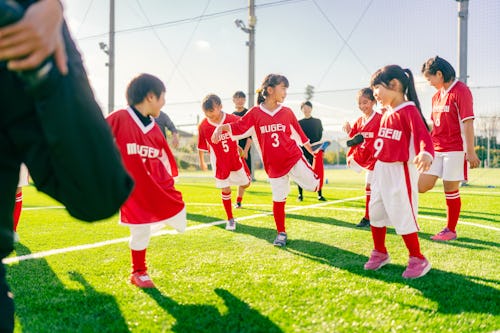
When kids start Kindergarten, they’re put through several evaluations to measure their preparedness for school. The goal is to even the playing field by identifying how schools can best support kids to meet their individual needs. Looking at factors like a child’s readiness to read, including hearing and language skills, matters a great deal; when addressed early, these interventions can help prevent kids from getting far behind their peers. But a new study in the Journal of Applied Psychology has uncovered troubling inequalities amongst Kindergarteners outside of the classroom that could have major consequences.
That “extracurricular gap” — the difference between which kids get to go play sports, or do ballet, or try art class outside of school — and kids who don’t get that privilege shows up earlier than previously understood. That can have huge ramifications down the road, considering how sports help kids develop emotional regulation skills and music classes have been shown to fuel educational curiosity.
Part of a larger Early Learning Ohio project that explores learning, achievement, and social development for kids in preschool through third grade, the study tracked 400 students from 31 classrooms in one large Ohio school district. Researchers gathered data from parents about the extracurricular activities their children participated in, as well as demographic measures such as race, gender, mother’s education, and income.
Among kindergarteners, white children were 2.6 times more likely than children of other races to participate in sports, which were the most common type of extracurricular activity. Additionally, children of highly educated mothers were almost twice as likely to play organized sports as those of less educated mothers. Ninety-six percent of children whose mothers held a graduate or professional degree participated in sports, compared to 47% of children whose mothers had a high school or equivalent education.
Although kids participated in religious activities at similar rates regardless of how much formal education their mothers completed, other activities such as participation in religious communities and creative arts groups saw a stark difference in participation levels.
Multilevel analyses revealed no associations between extracurricular activity participation and expressive vocabulary, but the authors indicated that further research is necessary to see if those correlations stand, and if they do so past Kindergarten. It’s possible that the study’s small sample size or the young age of the participants prevented those associations from surfacing.
“At kindergarten age, kids’ language skills are still developing, and they are just starting these extracurricular activities,” co-author Tzu-Jung Lin, Ph.D., associate professor of educational studies and a faculty associate of Ohio State’s Crane Center for Early Childhood Research and Policy, said in a statement. “If we looked at these same children for a few more years, we could expect to see the impact of extracurricular activities on their language development.”
Regardless of whether or not further studies can connect those dots, it’s clear that steps should be taken far before junior high to address extracurricular inequalities so that all kids can enjoy the benefits that come from participating in activities outside of the classroom.
Previous studies have found that sports help disadvantaged kids, especially, succeed in school, helping them hone skills of emotional and behavioral regulation, which in turn helps them stay focused at school. So closing the extracurricular gap isn’t simply a matter of fairness; it’s a substantive step toward reversing longstanding inequalities that have a real effect on the quality of kids’ lives.